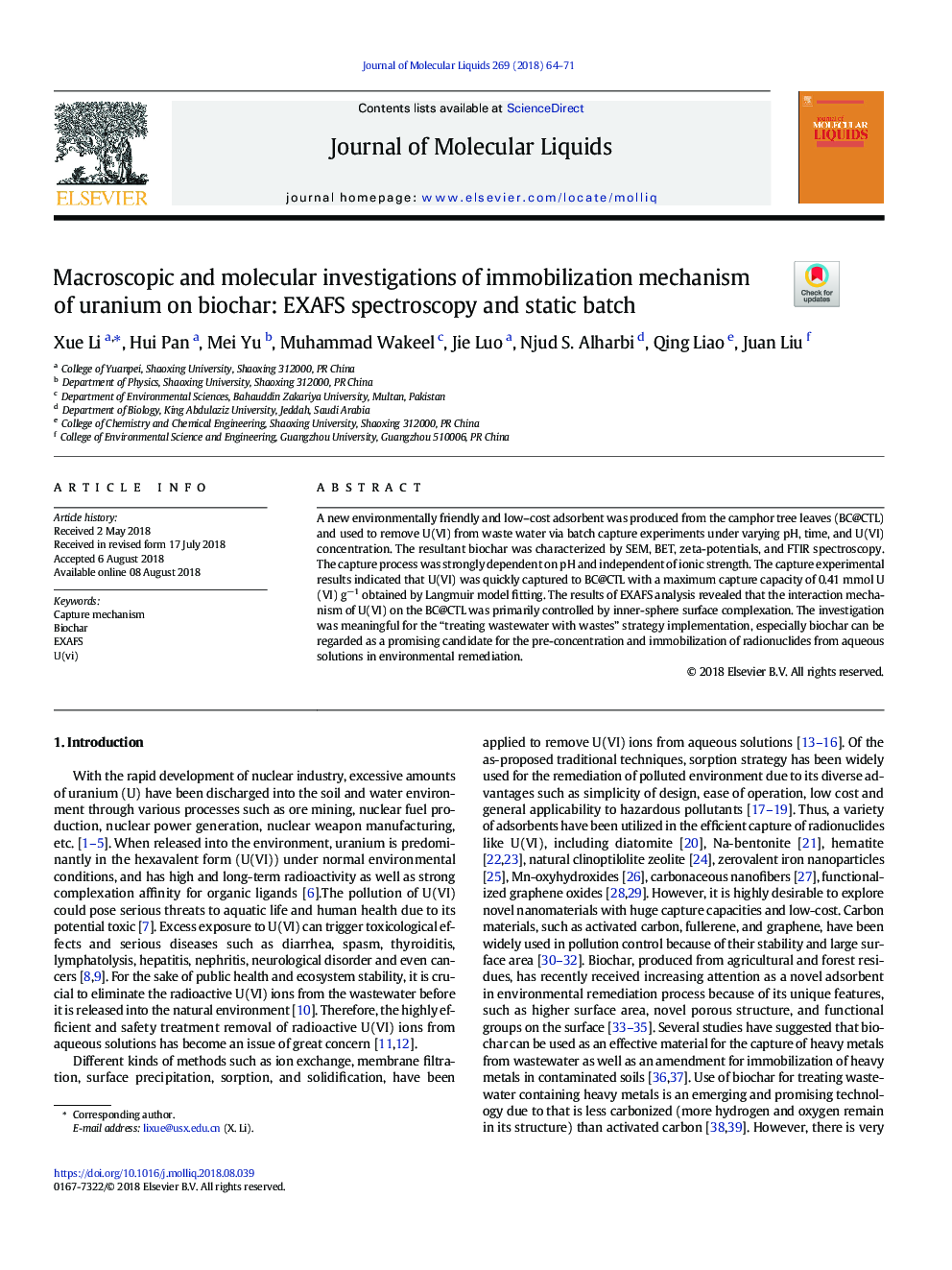| Article ID | Journal | Published Year | Pages | File Type |
|---|---|---|---|---|
| 7841589 | Journal of Molecular Liquids | 2018 | 8 Pages |
Abstract
A new environmentally friendly and low-cost adsorbent was produced from the camphor tree leaves (BC@CTL) and used to remove U(VI) from waste water via batch capture experiments under varying pH, time, and U(VI) concentration. The resultant biochar was characterized by SEM, BET, zeta-potentials, and FTIR spectroscopy. The capture process was strongly dependent on pH and independent of ionic strength. The capture experimental results indicated that U(VI) was quickly captured to BC@CTL with a maximum capture capacity of 0.41â¯mmolâ¯U(VI) gâ1 obtained by Langmuir model fitting. The results of EXAFS analysis revealed that the interaction mechanism of U(VI) on the BC@CTL was primarily controlled by inner-sphere surface complexation. The investigation was meaningful for the “treating wastewater with wastes” strategy implementation, especially biochar can be regarded as a promising candidate for the pre-concentration and immobilization of radionuclides from aqueous solutions in environmental remediation.
Related Topics
Physical Sciences and Engineering
Chemistry
Physical and Theoretical Chemistry
Authors
Xue Li, Hui Pan, Mei Yu, Muhammad Wakeel, Jie Luo, Njud S. Alharbi, Qing Liao, Juan Liu,
